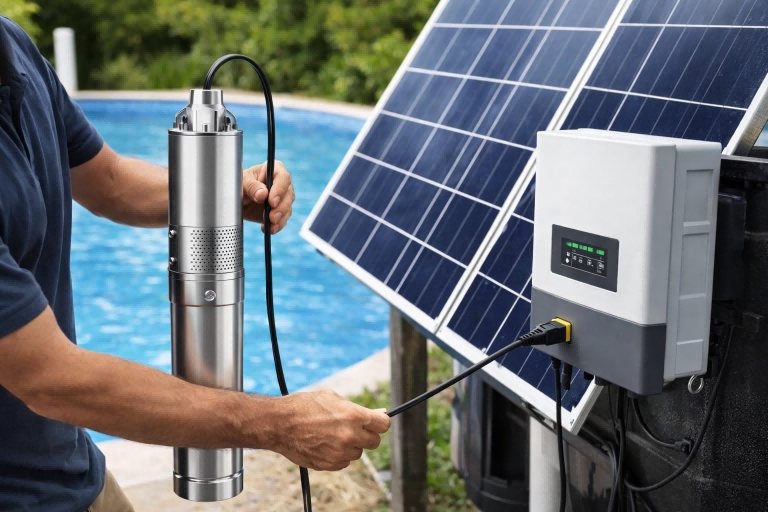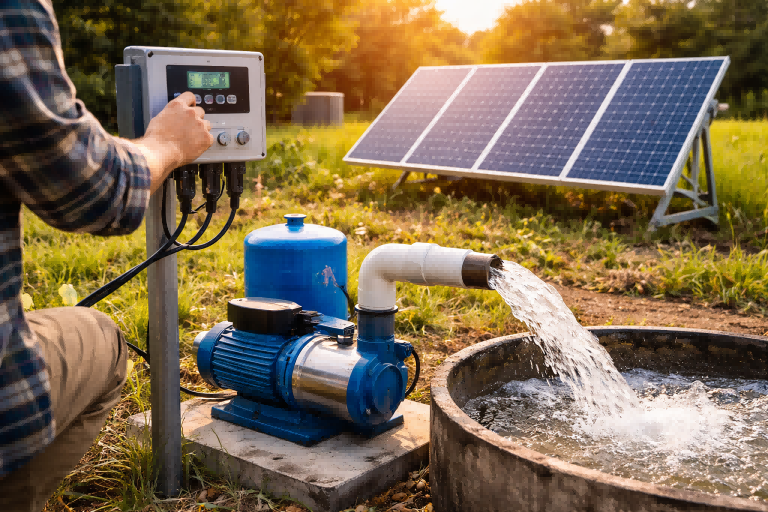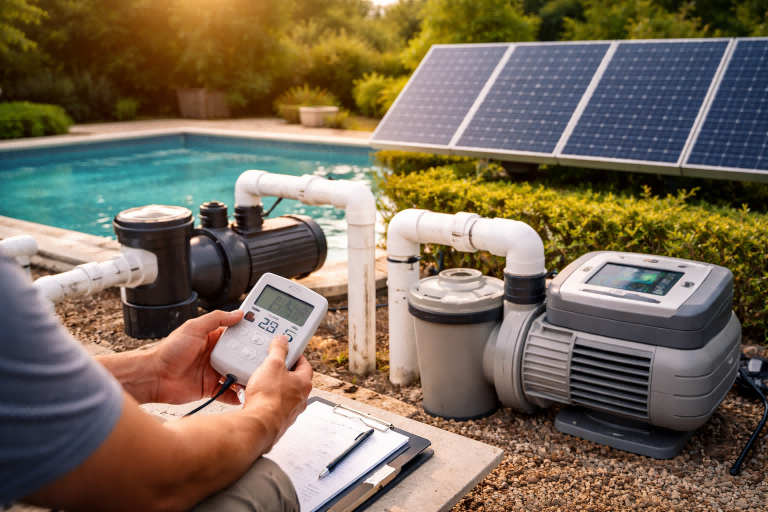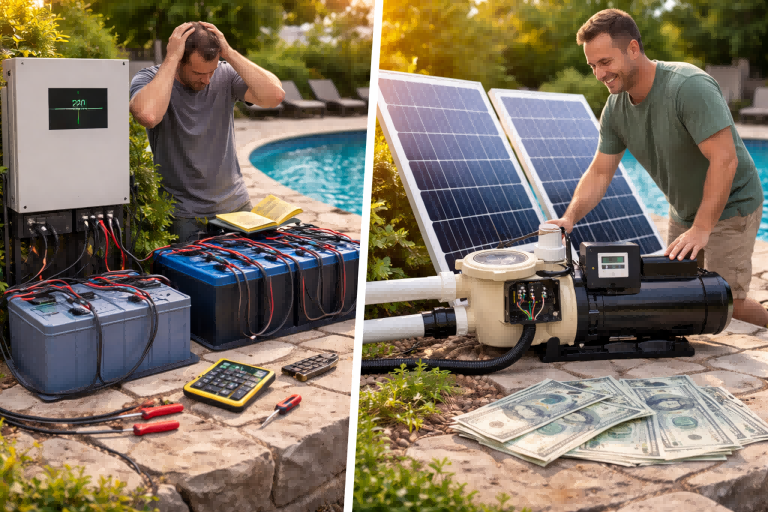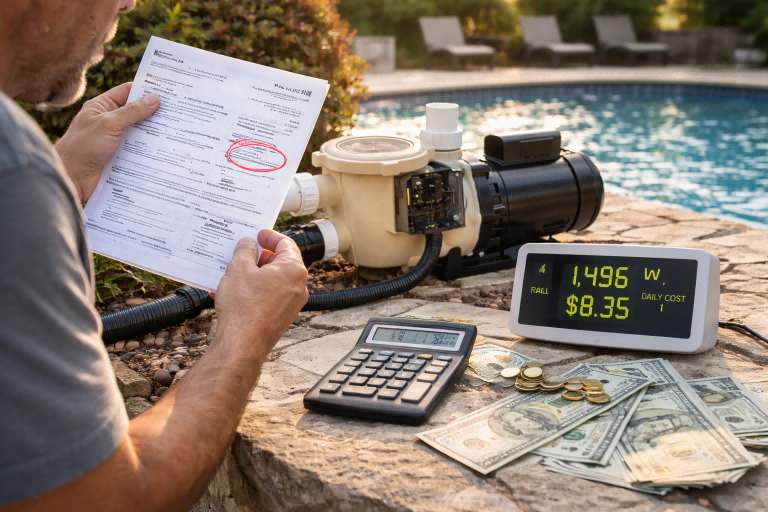Your pump system keeps failing, causing costly downtime and repairs.
You are tired of unpredictable performance and rising energy bills.
This guide breaks down the core issues and offers clear, actionable solutions.
The main problem in a centrifugal pump is often not a single issue but a group of related failures.
These failures commonly include cavitation, seal and bearing failure, and impeller damage.
These problems usually stem from incorrect pump selection, poor system design, or improper operational procedures.
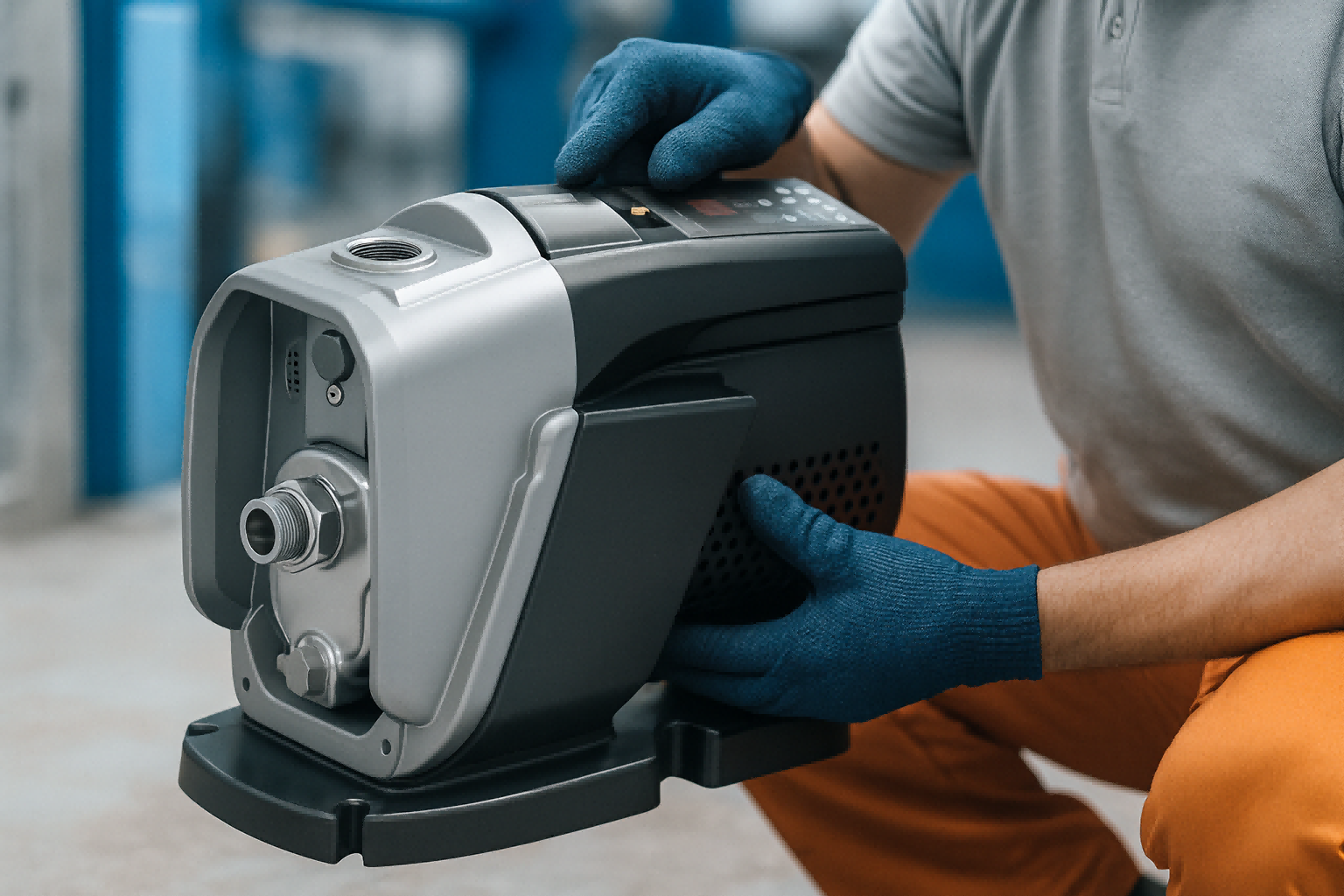
Identifying the root cause of pump failure can feel overwhelming.
Many symptoms, like noise or low pressure, can point to several different underlying problems.
Without a systematic approach, you might fix a symptom while the real issue continues to cause damage.
This can lead to a frustrating cycle of repeated repairs and replacements.
Understanding the most frequent and damaging problems is the first step toward building a reliable and efficient system.
We will now explore each of these major problem areas in detail.
This exploration will help you diagnose issues correctly and implement lasting solutions for your clients.
Cavitation: The Silent Pump Killer
Is your pump making a rattling noise like it's pumping gravel?
This alarming sound could be cavitation, a destructive force silently eating away at your pump's components.
Ignoring it leads to catastrophic failure.
Cavitation is the rapid formation and collapse of vapor bubbles within the liquid as it moves through the pump.
This collapse creates intense shockwaves that erode the impeller and casing.
It is a primary cause of premature pump failure, leading to significant damage and performance loss.
Cavitation is more than just a noise problem.
It is a direct assault on the heart of your pump.
Each tiny bubble implosion acts like a miniature hammer blow against the metal surfaces.
Over time, these impacts create pitting and erosion, primarily on the impeller vanes.
This damage reduces the pump's efficiency, affecting both flow and pressure.
If left unchecked, cavitation can destroy an impeller completely.
It can even crack the pump casing.
Understanding the conditions that create cavitation is crucial for any pump system designer or operator.
It is a preventable issue that requires careful attention to system design, especially on the suction side of the pump.
This knowledge is vital for distributors like Andrew, who need to ensure their customers receive reliable, long-lasting systems.
Let's dive deeper into the science behind this destructive phenomenon.
We will explore its causes, symptoms, and the precise steps you can take to prevent it.
What is Net Positive Suction Head (NPSH)?
The core concept in preventing cavitation is NPSH.
This term might sound technical, but it's a practical measure of pressure.
It determines if the liquid will turn to vapor at the pump's suction port.
There are two types of NPSH.
NPSH Available (NPSHa) is a characteristic of your system.
It is the absolute pressure at the pump suction nozzle minus the liquid's vapor pressure.
NPSH Required (NPSHr) is a characteristic of the pump.
It is the minimum pressure required by the pump to avoid cavitation.
A fundamental rule for a healthy pump system is: NPSHa > NPSHr.
You must always have more available pressure than the pump requires.
A safety margin of at least 3 feet (or 1 meter) is highly recommended.
Diagnosing Cavitation
Identifying cavitation early can save a pump from destruction.
You need to know the signs.
The most obvious symptom is the distinct sound.
- Noise: A rattling or crackling sound, often described as marbles or gravel passing through the pump.
- Vibration: The shockwaves from collapsing bubbles cause significant vibration, which can lead to bearing and seal failure.
- Performance Drop: You will see a fluctuating discharge pressure and a decrease in the flow rate.
- Physical Damage: Upon inspection, you will find pitting and erosion on the impeller, especially on the low-pressure side of the vanes.
How to Solve and Prevent Cavitation
Preventing cavitation is always better than dealing with its aftermath.
The goal is to increase the NPSHa of your system so it comfortably exceeds the pump's NPSHr.
This involves careful system design and operational checks.
| Solution Category | Specific Action | Impact on NPSHa |
|---|---|---|
| System Design | Increase suction pipe diameter. | Reduces friction loss, increasing NPSHa. |
| Shorten the suction pipe length. | Reduces friction loss, increasing NPSHa. | |
| Minimize bends and fittings in the suction line. | Reduces friction loss, increasing NPSHa. | |
| Operational Adjustments | Lower the pump's physical position. | Increases static head, significantly boosting NPSHa. |
| Raise the liquid level in the suction tank. | Increases static head, boosting NPSHa. | |
| Reduce the liquid's temperature. | Lowers vapor pressure, increasing NPSHa. | |
| Lower the pump's operating speed. | Reduces the pump's NPSHr. |
Using a Variable Speed Drive (VSD) pump offers a powerful solution.
By slowing the pump down, you directly reduce its NPSHr.
This can often solve a cavitation problem without costly changes to the physical piping.
This level of control is a key feature of modern systems like the RAFSUN VSD Booster Pumps, providing an intelligent way to protect equipment.
Mechanical Seal and Bearing Failures
Are seal leaks and bearing noise forcing frequent, expensive shutdowns?
These seemingly small components are the most common points of failure in centrifugal pumps.
Their failure can bring your entire operation to a halt.
Mechanical seal and bearing failures are the leading causes of pump downtime.
Seal failure results from issues like dry running or poor alignment, causing leaks.
Bearing failure is often caused by contamination, improper lubrication, or excessive vibration, leading to seizure.
Seals and bearings are the unsung heroes of a centrifugal pump.
The mechanical seal prevents the pumped liquid from leaking out along the rotating shaft.
The bearings support the shaft, allowing it to spin smoothly with minimal friction.
When either of these components fails, the consequences can be severe.
A leaking seal not only wastes product but can also create safety and environmental hazards.
A failed bearing generates extreme heat and vibration, which can quickly lead to catastrophic damage to the shaft, impeller, and pump casing.
Understanding why these critical parts fail is essential for reliability.
For a distributor, providing pumps with robust seal and bearing designs is a key selling point.
It demonstrates a commitment to quality and long-term performance, building trust with customers who value dependability.
We will now examine the specific causes of these failures and the best practices to prevent them.
Why Mechanical Seals Fail
Mechanical seals are precision components that operate under demanding conditions.
They rely on a microscopic film of fluid between two highly polished faces to create a seal.
Any disruption to this film can lead to failure.
Common Causes of Seal Failure:
- Dry Running: Operating the pump without liquid is the quickest way to destroy a seal. The fluid film disappears, causing the seal faces to overheat, warp, and crack in seconds.
- Improper Installation: Even small errors, like touching the seal faces with oily hands or not setting the correct compression, can cause premature failure.
- System Vibration: Excessive vibration from misalignment, imbalance, or cavitation causes the seal faces to chatter and chip, leading to leaks.
- Abrasive Fluids: Pumping liquids with solid particles can quickly wear down the seal faces. Choosing the right seal face materials (like silicon carbide) is critical.
- Chemical Incompatibility: The elastomers (O-rings) in the seal must be compatible with the liquid being pumped, otherwise, they can swell, harden, or dissolve.
Understanding Bearing Failure Modes
Pump bearings are designed to last for tens of thousands of hours.
However, they often fail much earlier due to external factors.
Proper lubrication and a clean operating environment are paramount.
Root Causes of Premature Bearing Failure
Identifying the cause is key to preventing a repeat failure.
The condition of a failed bearing can tell a story.
Here is a breakdown of the most common issues.
| Symptom | Probable Cause | Preventive Action |
|---|---|---|
| Visible Contamination | Contaminated lubricant | Use clean lubricants and tools. Ensure bearing housing seals are intact and effective. |
| Pitting on Bearing Race | Electrical Fluting (VSDs) | Install shaft grounding rings for motors controlled by Variable Speed Drives. |
| Discoloration (Blue/Brown) | Overheating due to lack of lube | Follow a strict lubrication schedule. Use the correct type and amount of grease/oil. |
| Indentation (Brinelling) | Improper installation, shock load | Use proper bearing installation tools. Avoid hammering directly on the bearing. |
| Spalling, Flaking | Normal fatigue (end of life) | This is expected after long service. Replace bearings proactively in critical systems. |
Modern intelligent pumps often include features to protect these components.
For instance, RAFSUN's VSD pumps have built-in dry-run protection.
This feature automatically shuts the pump down if it detects a no-flow condition, saving the mechanical seal from instant destruction.
This smart protection is a significant value-add for customers, reducing maintenance costs and improving overall system reliability.
Impeller Damage and Inefficiency
Is your pump's performance steadily declining?
Are your energy bills creeping up for the same amount of work?
The problem could be hidden inside the pump, in the form of a damaged or inefficient impeller.
Impeller damage, caused by abrasion, corrosion, or cavitation, directly reduces a pump's performance.
An inefficient impeller forces the motor to work harder to achieve the desired flow and pressure.
This leads to higher energy consumption and lower system output.
The impeller is the component that does all the work.
Its rotating vanes transfer energy from the motor to the fluid, creating pressure and flow.
Any change to the impeller's shape, size, or surface finish will compromise its performance.
Damage is not always dramatic; often, it is a slow process of wear and tear.
Abrasive particles in the fluid can act like sandpaper, gradually eroding the impeller vanes.
Corrosive liquids can chemically attack the impeller material, weakening it and altering its hydraulic properties.
Even a partial clog can unbalance the impeller, leading to vibration and further damage.
For businesses that rely on pumps, this gradual loss of efficiency translates directly to higher operational costs.
A distributor who can advise on proper impeller selection and maintenance provides immense value to their clients.
Let's explore the common types of impeller issues and how to manage them.
Types of Impeller Damage
Understanding the different ways an impeller can be damaged helps in diagnosing the root cause.
- Abrasive Wear: This occurs when pumping liquids containing hard solids like sand or slurry. The impeller vanes become thinner, and the leading edges get rounded. This is common in mining, construction, and some industrial processes.
- Corrosive Wear: This is a chemical attack on the impeller material. It can cause uniform material loss or localized pitting. The correct material selection is the most important defense against corrosion.
- Cavitation Erosion: As discussed earlier, this creates a distinctive pitted, spongy appearance on the back of the impeller vanes.
- Foreign Object Damage: Sometimes, debris like rocks, bolts, or rags can enter the pump. This can cause bent or broken vanes, leading to severe imbalance and immediate failure.
The Impact of Impeller Trimming
Sometimes, an impeller is intentionally trimmed (machined to a smaller diameter).
This is done to adjust a pump's performance to better match system requirements.
While it is a valid practice, it comes with consequences.
Affinity Laws for Impeller Trimming:
- Flow (Q) is proportional to the new diameter (D2) antrimming.
Q2 = Q1 * (D2 / D1) - Head (H) is proportional to the square of the diameter change.
H2 = H1 * (D2 / D1)² - Power (P) is proportional to the cube of the diameter change.
P2 = P1 * (D2 / D1)³
The key takeaway is that trimming reduces the pump's efficiency.
A trimmed impeller will always be less efficient than a full-diameter impeller designed for that same duty point.
It creates a larger gap between the impeller vane tips and the pump volute, causing more fluid to recirculate internally instead of exiting the pump.
A Better Solution: Variable Speed Drives
Instead of permanently altering an impeller by trimming it, a far more efficient method to control a pump's output is by adjusting its speed.
A Variable Speed Drive (VSD) allows you to precisely match the pump's performance to the system's needs in real-time.
| Feature | Impeller Trimming | Variable Speed Drive (VSD) |
|---|---|---|
| Efficiency | Permanently reduces pump's Best Efficiency Point (BEP). | Maintains high efficiency across a wide range of speeds. |
| Flexibility | Permanent, irreversible change. | Infinitely adjustable to meet changing system demands. |
| Control | Fixed performance point. | Dynamic control of flow, pressure, or level. |
| Energy Savings | Some savings if pump was oversized. | Significant energy savings (up to 50% or more). |
For a customer like Andrew, offering a VSD solution instead of a trimmed-impeller solution is a major upgrade.
It provides his clients with a more flexible, efficient, and ultimately more cost-effective system.
The RAFSUN product line, with its focus on intelligent permanent magnet variable frequency pumps, is designed to deliver these modern benefits.
System Issues and Poor Pump Performance
Does your new pump fail to deliver the expected flow or pressure?
Before you blame the pump, look at the entire system.
Often, the pump is working perfectly, but the system around it is the real problem.
Poor pump performance is frequently caused by system-related issues, not a faulty pump.
Common culprits include air leaks in the suction line, clogged pipes or valves, or a mismatch between the pump's capabilities and the system's requirements (system curve).
A centrifugal pump is just one component in a larger hydraulic system.
Its performance is entirely dependent on the conditions of that system.
You can have the best pump in the world, but if it is connected to a poorly designed piping system, it will not perform as expected.
This is a critical concept for anyone selling, installing, or operating pumps.
Many pumps are returned as "faulty" when the real issue lies in a hidden air leak, a partially closed valve, or clogged filters.
Teaching customers to think in terms of the entire system is a key responsibility for a knowledgeable distributor.
It prevents misdiagnosis, saves time, and builds a reputation for expertise.
Let's break down how to analyze the system to find the true source of performance problems.
The Pump Curve vs. The System Curve
To understand pump performance, you must understand two graphs.
- The Pump Performance Curve: This is provided by the manufacturer. It shows the relationship between the flow rate (Q) and the head (H) the pump can produce at a specific speed.
- The System Head Curve: This is a characteristic of your piping system. It plots the total head required to move fluid through the system at various flow rates. It includes static head (elevation changes) and friction head (losses in pipes and fittings).
The Operating Point: A pump will always operate at the intersection of its performance curve and the system head curve.
If the actual operating point is not where you want it to be, you must either change the pump curve (e.g., change speed) or change the system curve (e.g., change pipe size).
Common System-Related Problems
Here is a checklist for troubleshooting poor performance.
Always start with the simplest explanations first.
Suction Side Problems:
- Air Leaks: The most common problem. Even a tiny pinhole leak in the suction piping or a fitting can allow air to be drawn into the pump, severely impacting performance.
- Clogged Suction Line: A clogged strainer, foot valve, or pipe will starve the pump of fluid, acting like a closed valve and drastically reducing flow.
- Insufficient Submergence: If the suction pipe inlet is too close to the liquid surface, it can create a vortex and draw air into the line.
Discharge Side Problems:
- Throttled Valve: A valve on the discharge side that is not fully open will create extra friction and reduce flow.
- Blockages: Clogs in the discharge piping, heat exchangers, or spray nozzles will increase the system head, forcing the pump to operate at a lower flow rate.
- Incorrect System Design: Using pipes that are too small for the required flow rate creates excessive friction loss, which the pump may not be able to overcome.
The Role of Intelligent Pumps in System Management
Modern VSD pumps can provide valuable insights into system behavior.
By monitoring power draw and pressure, an intelligent pump can help diagnose problems.
For example, a constant pressure pump from RAFSUN is designed to maintain a set pressure.
If it has to run at maximum speed continuously to do so, it indicates a potential issue in the system, like a major leak.
If it runs at a very low speed while the pressure is met, it could indicate that the system demand is much lower than anticipated.
This "smart" functionality transforms the pump from a simple machine into a diagnostic tool for the entire system.
Conclusion
The main problem in a centrifugal pump is rarely a single fault.
It is typically a chain reaction of issues rooted in system design, application, and maintenance.
FAQs
What is the most common cause of centrifugal pump failure?
The most common causes are mechanical seal failures and bearing failures.
These are often triggered by underlying issues like vibration, misalignment, or improper lubrication.
How do I know if my pump has cavitation?
You will hear a distinct noise like gravel or marbles rattling inside the pump.
You may also notice increased vibration and a fluctuating discharge pressure.
Can a centrifugal pump run backward?
Yes, and it will still pump fluid but very inefficiently (around 50% of its rated flow and head).
This can also damage certain types of mechanical seals and bearings.
Why is my pump not building enough pressure?
This can be caused by air in the system, a clogged impeller, running in reverse, or excessive internal wear.
It could also be that the pump is simply too small for the system's requirements.
What is pump deadheading?
Deadheading is operating a pump with the discharge valve completely closed.
This is extremely dangerous as the energy input churns the liquid, causing it to heat up and potentially flash to steam, which can cause a violent explosion.
How can a VSD save energy on a pump?
A VSD saves energy by slowing the pump down to match the exact system demand.
Since power consumption is related to the cube of the speed, even a small reduction in speed results in significant energy savings.
Why is pump alignment so important?
Proper alignment between the pump and motor shafts is critical.
Misalignment creates immense stress on the bearings and seals, leading to premature failure and damaging vibration.


